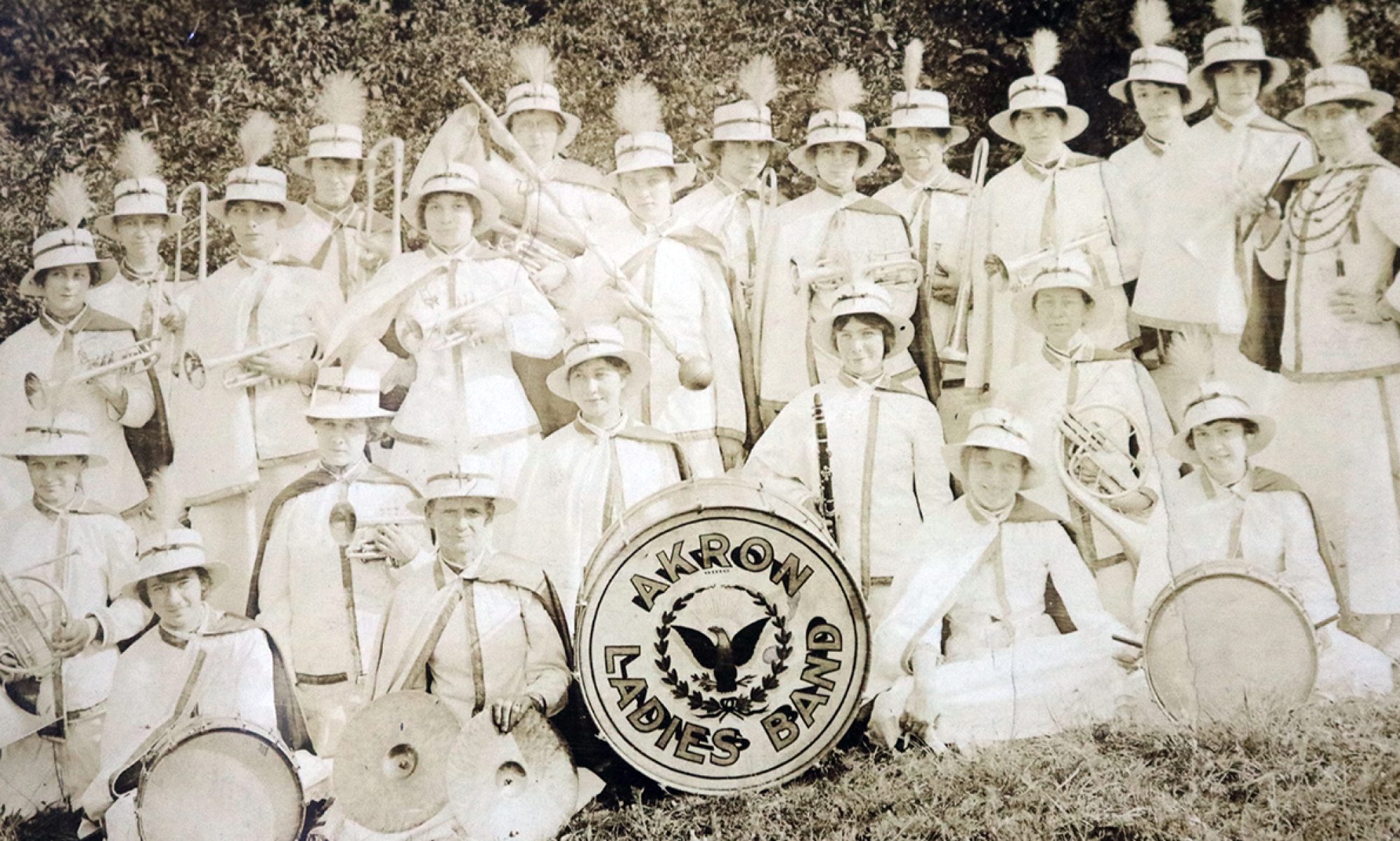During the antebellum period, Akron grew slowly. According to Howe’s History of Ohio, Akron’s population was “about” 600 in 1827, 1,664 in 1840 and 1,930 in 1850. On the eve of the Civil War, Akron’s population had almost doubled to 3,520 (1860).
Following the Confederate attack on Ft. Sumter on April 12, 1861, Akron and its residents overwhelmingly supported the Union cause. The city’s newspaper reported, “National flags, almost without number, have been stretched across our streets, and displayed upon our stores, shops, and dwellings.” There were cheers for the Union, Akron residents sang patriotic songs and men marched in the street.
Days after the Ft. Sumter attack, Akron and Summit County men rushed to enlist. The new volunteers settled in “Camp Akron” on the fairgrounds overlooking the city. The fair buildings became the new recruits’ barricades and “the ladies of the city generously supplying the boys, rations, blankets, etc.” a newspaper editor observed.
That would be just the start of the support Akron women would afford their “soldier boys.” The largest number of women worked for the Soldiers’ Aid Society, which was organized in Akron in May 1861. The Soldiers’ Aid Society was a private organization primarily made up of women, who were committed to providing Northern soldiers with needed supplies, everything from baked goods to blankets. medical supplies to clothing. Akron’s Soldiers’ Aid Society was the largest, most active women’s organization in the city.
The Civil War represented a turning point for the city of Akron in several regards. First, the war brought “boom” times to the city – commerce and manufacturing churned out needed products to wage war, railroad facilities expanded. The city increased in size, wealth and population. Second, through their work in the Soldiers’ Aid Society, women were learning important organizational, fund-raising and media skills that would serve them well in wartime and after.
City newspapers identified more than 160 Akron women for their activism and generosity to the Soldiers Aid Society. What follows are just a few of the women named during the Civil War.
Sources: Kathleen L. Endres, Akron’s “Better Half”: Women’s Clubs and the Humanization of the City, 1825-1924, Akron: University of Akron Press, 2006.
Henry Howe, Historical Collections of Ohio: An Encyclopedia of the State, Columbus: Henry Howe & Son, 1889.
Samuel A. Lane, Fifty Years and Over of Akron and Summit County, Akron: Beacon Job Dept.,1892.
Photos courtesy of the Summit County Historical Society.
